Understanding Quntizhong: China’s Heirloom Tea Plants
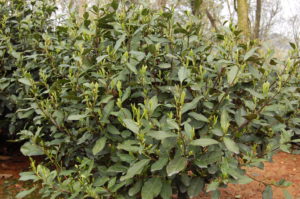
Among the wide variety of available tea cultivars, where do heirloom plants fit in? The specific variety of tea plant used to make any tea has a big influence on the final product. All of the hundreds of tea cultivars in existence have their own distinct flavors, aromas, and patterns of growth. The differences between each tea variety can be so great that many famous Chinese teas are only considered authentic when made from the original tea bushes native to the place their style originated. Teas like these, such as Bi Luo Chun, are made from special heirloom cultivar tea bushes known in China as quntizhong.
Simply speaking, quntizhong are seed-grown tea plants. They’re grown from seeds rather than cuttings. That means that they possess the long, strong taproot that cutting-grown plants don’t, which also gives them much greater longevity that can reach well into the centuries.
But that’s not the only thing that makes quntizhong different. These tea cultivars are special on both the levels of the individual plants and the garden population, as well in their relationship with the tea makers who tend them and their unique place in the larger tea industry.
There are two main subspecies of the tea plant: the large-leaf tea tree (Camellia sinensis var. assamica) and the small leaf tea bush (Camellia sinensis var. sinensis). From those, China has developed over 200 improved tea cultivars,1 and over 120 of those are nationally registered. There are more registered at the provincial level and doubtless many other unofficial cultivars and wild varieties in existence.
However, quntizhong form a unique category of tea cultivar. These highly diverse varieties of tea plants possess strong historic ties to localized regions. They have been cultivated in their places of origin for a long time, often by the same families across generations. Furthermore, they are often integral to the specific stylistic tea-making traditions of teas like Longjing (Dragonwell), Guzhu Zisun (Purple Bamboo Shoot), and Bi Luo Chun. Although the demand for these rare high-end teas has created a market for imitations, the distinctive character of their original cultivar quntizhong bushes makes them quite a challenge to recreate with any other variety. The specific example of Bi Luo Chun illustrates this close relationship between tea bush and tea making.
Where Does the Real Bi Luo Chun Come From?
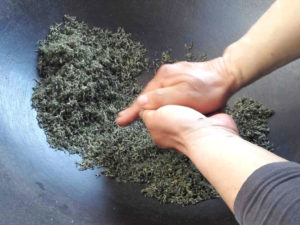
This early spring green tea is often mimicked using different tea cultivars processed in the same style. It’s common for early-flushing Sichuan varieties like those used to make Mengding Ganlu (Sweet Dew) to be sold under the name Bi Luo Chun. But even when made in the exact same way, the tea buds are too large and firm to twist properly into Bi Luo Chun’s traditional curling “snail” shape. They also lack the rich fruity and floral aroma that Bi Luo Chun is known for. The original Bi Luo Chun is made from the smaller, softer, and more delicate buds of the tea plants that grow around the Dongting Mountains on the shores of Tai Lake in Jiangsu Province. These are the plants that were used to make the tea when Bi Luo Chun’s style was originally being developed in this region of Jiangsu hundreds of years ago.
Of course, these plants are not frozen in time, but rather a constantly evolving population.3 They’ve changed since Bi Luo Chun was developed, and the styles of tea production in this area of Jiangsu have evolved over time as well. But these localized plant populations have been cultivated over centuries specifically for the purpose of making this particular style of tea. The tea-making techniques have evolved alongside the crops, and that is what really makes teas like Bi Luo Chun unique. Varieties of tea bush that have been developed this way are referred to as quntizhong (群体种 qúntǐ zhǒng), often translated as “group varieties” or “community varieties.”
What Makes Heirloom Tea Cultivars (Quntizhong) Unique?
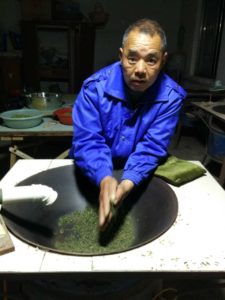
“Quntizhong” has a lot in common with the English terms “heirloom” and “landrace.” Heirlooms refer to any older cultivar of food plant that has been kept alive by farmers and gardeners, especially in isolated and ethnic minority communities.4 Both of these conditions are often true in the rural countryside where most Chinese tea farmers live. The more specific agricultural term “landrace” describes a domesticated plant or animal that has adapted over time to both natural and cultural influences.5
For example, the quntizhong used to make traditional Bi Luo Chun is Xishan Xiaoyezhong (Xi Mountain Small Leaf Bush), named for its signature very small leaves and the specific peak of the Dongting Mountains where it grows. These plants have lived on the shores of Tai Lake for a great many generations and have adapted to the growing conditions there, such as the subtropical monsoon climate, low elevation, and acidic soil. They have also long undergone cultivation, consciously or unconsciously, by the people who live in this area to produce tea that tastes better and is easier to grow. Both landraces and quntizhong are defined by this deep connection to a place and people.
“Quntizhong” is an official term typically used by scholars of tea. However, much like the actual quntizhong themselves, tea farmers in the countryside have often developed their own local names for them. Within Fujian Province alone, there are multiple regional names for quntizhong. In southern Fujian, quntizhong are referred to as càichá (菜茶) or “vegetable tea” since they are heirloom crops grown in home gardens like vegetables. People in eastern Fujian, the origin of white tea and Fuding’s wildly popular clonal cultivar Da Bai Hao, call them tǔchá (土茶) or “earth tea.” In the Wuyi Mountains to the north, the home of rock wulong and Lapsang Souchong black tea, quntizhong are called qízhǒng (奇种) or “surprise bush.” This name highlights the unpredictable variation in the plants’ characteristics from one generation to the next when highly diverse cultivars like quntizhong are grown from seed.
How Heirloom Tea Plants are Influencing Genetic Diversity, Crop Sustainability, and the Future of Tea Cultivation
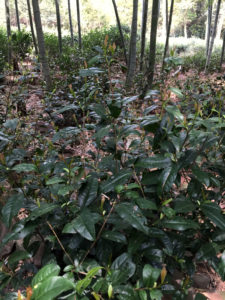
Much like landraces and heirlooms, seed-grown quntizhong have greater genetic diversity than most commonly grown tea cultivars. This diversity is easily observed in the wide variation of individual plants’ taste and smell, cold and drought hardiness, leaf size and shape, and many other characteristics. This variation is responsible for the highly distinctive rich complexity found in tea made from quntizhong.
Farmers maintain quntizhong’s genetic diversity by growing new tea plants from seed, instead of by vegetative methods that produce clones. Plants that grow from seed are similar to, but never quite the same as, the parent plants. They inherit a random selection of half the genes of each parent and end up with an entirely new combination of genes. This means that every individual plant will respond differently to changes in the environment, such as new diseases or stresses due to climate change. Some will survive or even thrive while others will fare poorly.
Having a diverse population makes for greater long-term adaptability of a crop in the face of a variety of challenges. Like many crops worldwide, the tea industry faces heightened vulnerability due to crop monocultures, which can be wiped out entirely if a weakness the entire crop shares is exploited. Currently, the most common way of developing new tea cultivars is selecting the best individual plants from seed-grown populations and then propagating them clonally.1 The Chinese government has strongly promoted these clonal tea cultivars to farmers since the 1980s. As a result, most large-scale tea farms in China have been planted with genetically identical monocultures of these cultivars.
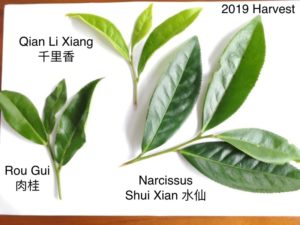
To make up for their vulnerabilities, resources such as seed banks have successfully been used in the past to introduce new traits into monocultures to help them adapt to specific stresses.6 As weather extremes become more common and pronounced with climate change, such adaptations will become more and more necessary. For tea in particular, over 3000 different tea plant samples have been cataloged in China’s national tea repository of genetic information for the purpose of preserving tea’s genetic diversity.2 Some tea scientists propose increased cultivation of quntizhong as a key strategy in keeping the tea industry sustainable in the face of climate change.7
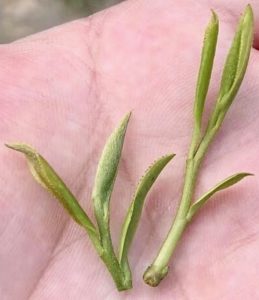
However, quntizhong tend to be rarer, less productive, and more difficult to grow than commercial varieties. They have more challenging care and processing requirements than the varieties that have been optimized for large-scale agricultural production. Tea farmers who are already struggling to make ends meet from one year to the next to have little incentive to put in the extra work to cultivate quntizhong for the long-term benefits. While it takes three years until seed-grown tea plants can be harvested, it takes only one to two years to begin harvesting leaves from clonal tea plants grown from cuttings. That year or two can make the difference in survival for hardworking countryside families.
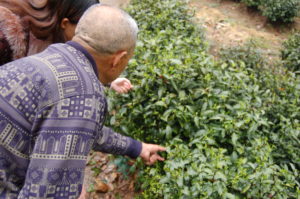
Nonetheless, tea made from quntizhong tends to have a deeper complexity and richness that fascinates tea lovers. These kinds of high-quality specialty teas can be both more profitable for the farmer and more rewarding for the tea drinker. Quntizhong also have unique strong historical and cultural ties to particular styles of processing, which gives the teas made from them a greater sense of authenticity.
As a tea business, delivering good tea at a good value for the price you pay is our main concern. Because of the production challenges that come with rare traditional teas, sourcing well-made tea made from commercial varieties of clonal tea plants is very often necessary. Clonal plants are even desirable when you want tea that has a clear and focused flavor, such as Anji Baicha green tea with its widespread and well-earned reputation. Making tea is a complicated art form, and skilled cultivation and processing is capable of producing very fine tea indeed from common cultivars. However, we also hold on to the hope that traditional styles of crafting tea with rare quntizhong plants will survive.
Seven Cups is extremely lucky to carry a number of quntizhong teas sourced from their historic places of origin. They are the result of preserving long traditions and high standards of quality against all odds. We hope to keep bringing you specialty teas like these in the future, and at the same time support the tea farmers who are protecting the diversity and sustainability of the tea industry.
Updated Aug. 15, 2023.
References
1 Chen, Liang et al. “Genetic improvement and breeding of tea plant (Camellia sinensis) in China: from individual selection to hybridization and molecular breeding.” Euphytica vol. 154:239–248. Jan. 2007, doi:10.1007/s10681-006-9292-3. Accessed 4 May 2020. [https://www.researchgate.net/profile/Liang_Chen52/publication/227084180_Genetic_improvement_and_breeding_of_tea_plant_Camellia_sinensis_in_China_From_individual_selection_to_hybridization_and_molecular_breeding/links/00b4953c47445d2838000000.pdf]
2 Yao, Ming-Zhe and Chen, Liang. “Tea Germplasm and Breeding in China.” Global Tea Breeding. Advanced Topics in Science and Technology in China. Springer, Berlin, Heidelberg, 2012, doi:10.1007/978-3-642-31878-8_2. Accessed 4 May 2020. [https://link.springer.com/chapter/10.1007/978-3-642-31878-8_2]
3 Casañas, Francesc et al. “Toward an Evolved Concept of Landrace.” Frontiers in Plant Science vol. 8:145. 8 Feb. 2017, doi:10.3389/fpls.2017.00145. Accessed 4 May 2020. [https://www.ncbi.nlm.nih.gov/pmc/articles/PMC5296298/]
4 “Heirloom plant.” wikipedia.org. Wikipedia, n.d. Web. Accessed 4 May 2020. [https://en.wikipedia.org/wiki/Heirloom_plant]
5 “Landrace.” wikipedia.org. Wikipedia, n.d. Web. Accessed 4 May 2020. [https://en.wikipedia.org/wiki/Landrace]
6 Heiliers, Gregory. “The Role of Heirloom Crops vs Genetic Engineering in Future Food Systems.” agfundernews.com. AgFunderNews. 26 Feb. 2019. Web. Accessed 4 May 2020. [https://agfundernews.com/the-role-of-heirloom-crops-vs-genetic-engineering-in-future-food-systems.html]
7 Ahmed, Selena. “Toward the Implementation of Climate-Resilient Tea Systems. Agroecological, Physiological, and Molecular Innovations.” Stress Physiology of Tea in the Face of Climate Change. Edited by Han, Wen-Yan et al. Springer Singapore, 2018, doi:10.1007/978-981-13-2140-5. Accessed 4 May 2020. [https://www.springer.com/us/book/9789811321399]
